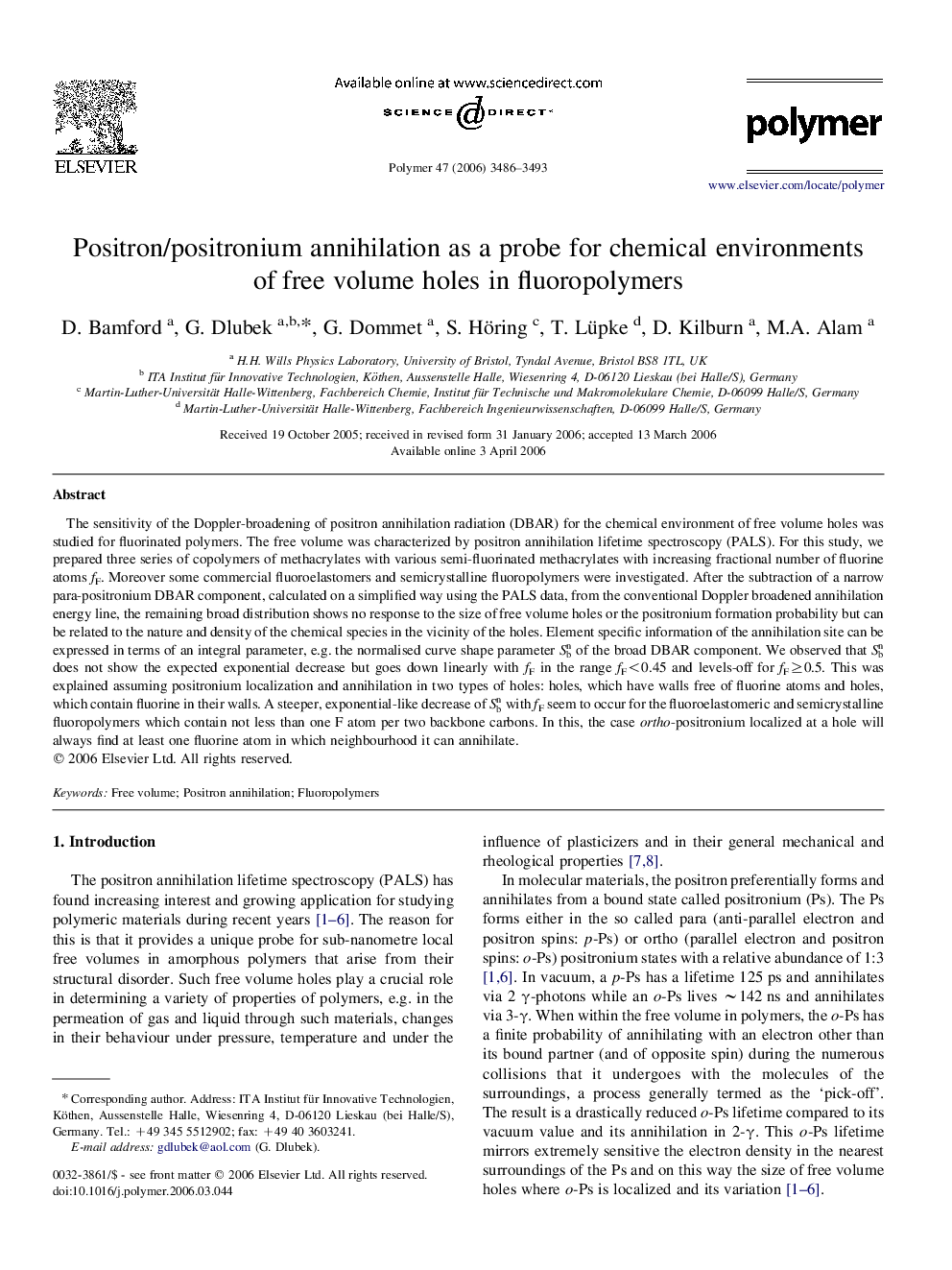| Article ID | Journal | Published Year | Pages | File Type |
|---|---|---|---|---|
| 5187118 | Polymer | 2006 | 8 Pages |
The sensitivity of the Doppler-broadening of positron annihilation radiation (DBAR) for the chemical environment of free volume holes was studied for fluorinated polymers. The free volume was characterized by positron annihilation lifetime spectroscopy (PALS). For this study, we prepared three series of copolymers of methacrylates with various semi-fluorinated methacrylates with increasing fractional number of fluorine atoms fF. Moreover some commercial fluoroelastomers and semicrystalline fluoropolymers were investigated. After the subtraction of a narrow para-positronium DBAR component, calculated on a simplified way using the PALS data, from the conventional Doppler broadened annihilation energy line, the remaining broad distribution shows no response to the size of free volume holes or the positronium formation probability but can be related to the nature and density of the chemical species in the vicinity of the holes. Element specific information of the annihilation site can be expressed in terms of an integral parameter, e.g. the normalised curve shape parameter Sbn of the broad DBAR component. We observed that Sbn does not show the expected exponential decrease but goes down linearly with fF in the range fF<0.45 and levels-off for fFâ¥0.5. This was explained assuming positronium localization and annihilation in two types of holes: holes, which have walls free of fluorine atoms and holes, which contain fluorine in their walls. A steeper, exponential-like decrease of Sbn with fF seem to occur for the fluoroelastomeric and semicrystalline fluoropolymers which contain not less than one F atom per two backbone carbons. In this, the case ortho-positronium localized at a hole will always find at least one fluorine atom in which neighbourhood it can annihilate.
